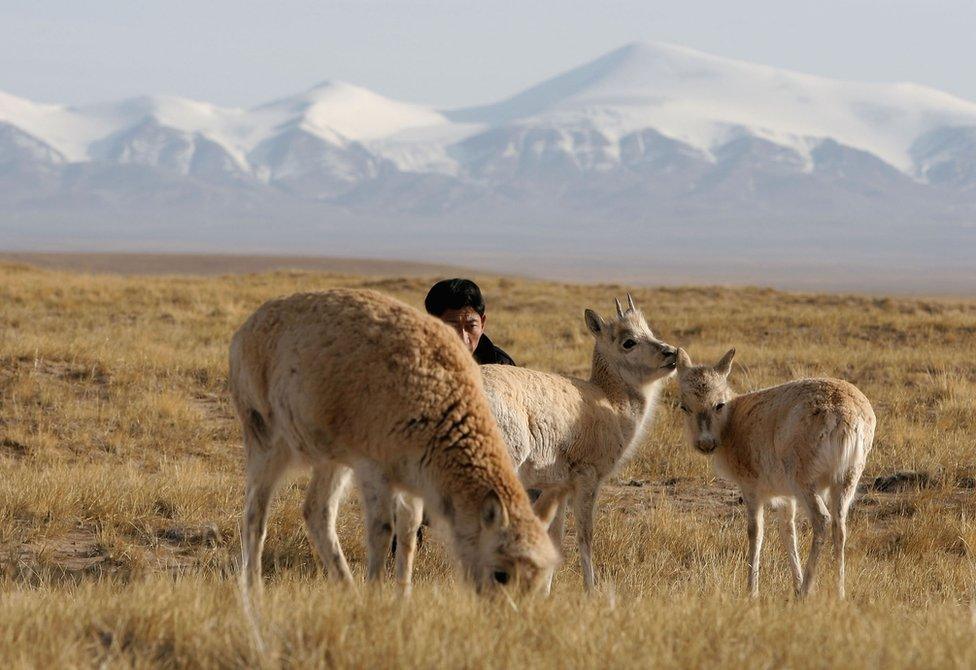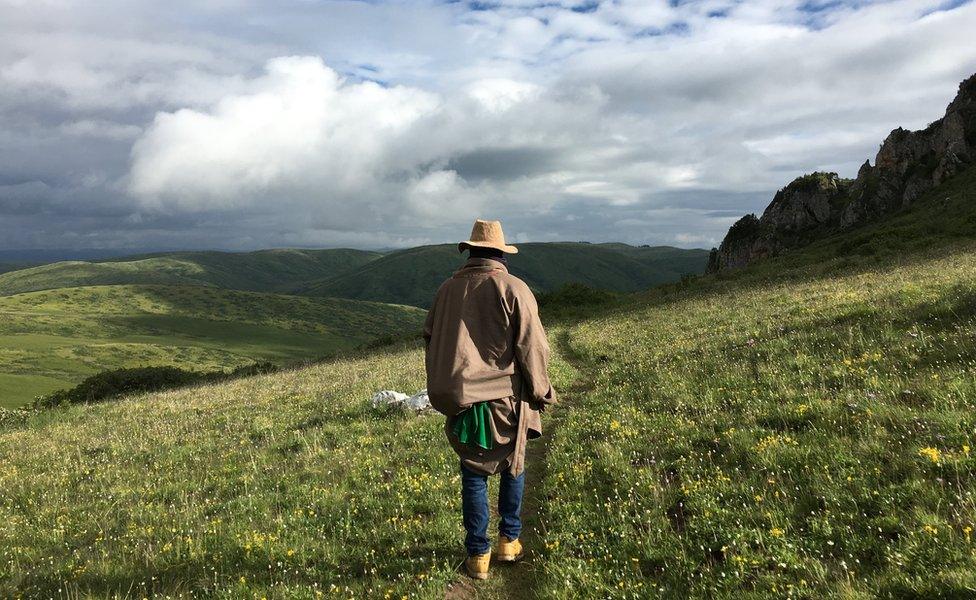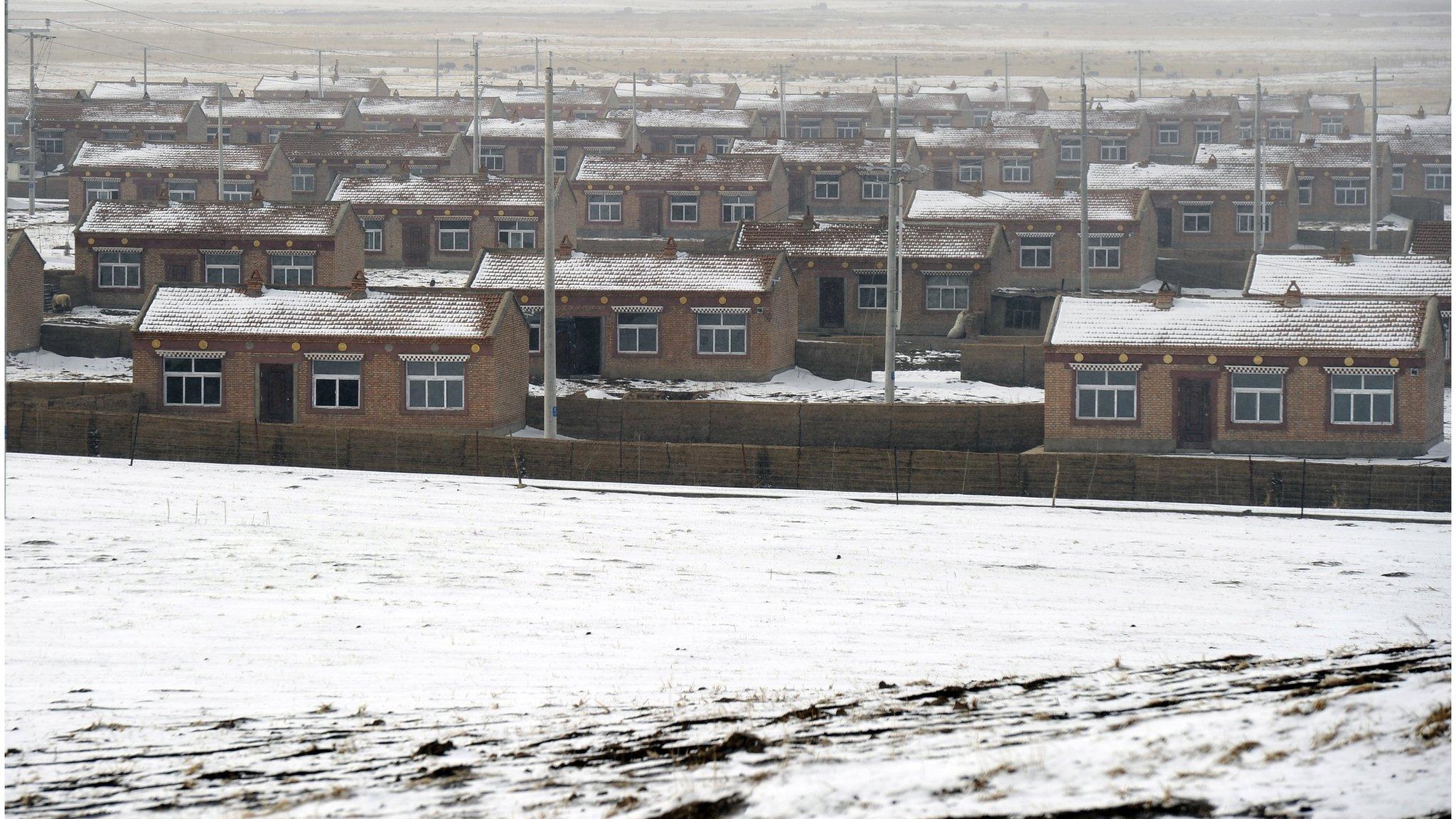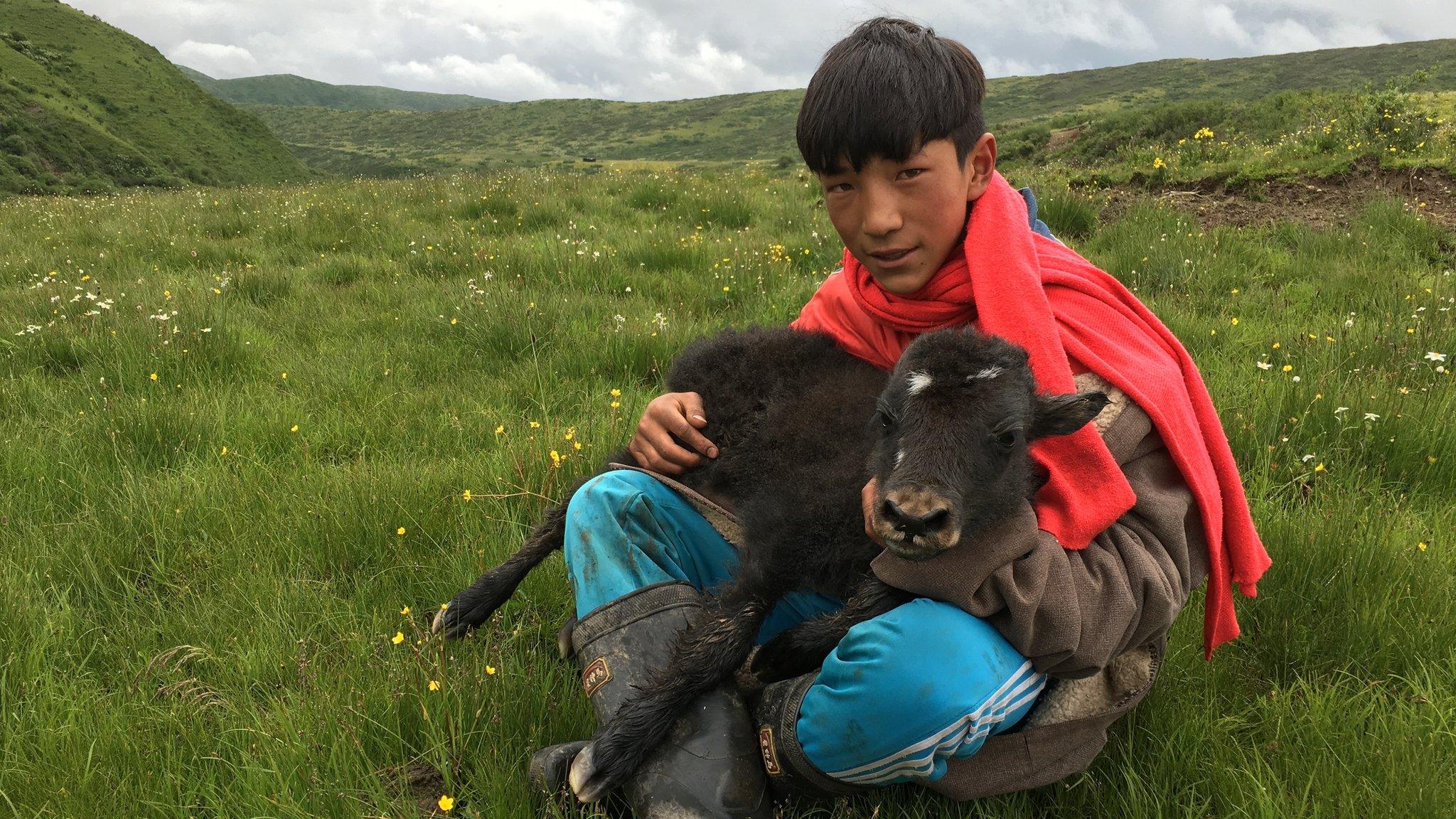Unesco heritage listing sparks Tibetan resettlement fears
- Published

Hoh Xil, also known as Kekexili, is a vast nature reserve that is home to the endangered Tibetan antelope
Tibetan rights groups have criticised the UN's cultural body for listing a plateau in China as a Unesco World Heritage site.
They say the move may embolden Beijing to resettle Tibetan nomads who currently live as herders on the Hoh Xil plateau.
Unesco noted, external that the plateau, located in the western Qinghai province, is the largest and highest in the world.
Its unique biodiversity includes the endangered Tibetan antelope.
Qinghai province, which borders the Tibetan Autonomous Region (TAR), has a sizeable Tibetan population.
When Beijing sent in troops to assert China's claim to the region in 1950, some areas became the TAR while others were incorporated into neighbouring provinces.
What's the controversy about?
Hoh Xil, which is also known as Kekexili, is a part of the larger Qinghai-Tibetan plateau. China says it is a key habitat and breeding ground for Tibetan antelope and holds important migration routes.
The area - comprising 4.12 million hectares (15,907 square miles) - is also home to wolves, bears and contains "a vast landscape of extraordinary beauty for the planet".
China's submission, external for the listing estimates that 50,000 people roam the area and its buffer zone.
Tibetan activist groups say that the Unesco move, announced over the weekend, will give Beijing cover to relocate Tibetan nomads out of the area.
China has resettled Tibetan herders in many areas. It says it is pumping resources into improving their living standards but activists say it harms their traditional way of life and further erodes Tibetan culture.
Students for a Free Tibet, external said Unesco's decision was "outrageous" and gave China "the green light to continue with its plan to forcibly remove Tibetan nomads off their traditional lands and, ultimately, wipe out this ancient way of life".
The International Campaign for Tibet, external said China's nomination of the plateau came from policies that encourage mass tourism and government control.
It accused Unesco of supporting the nomination "without question" and ignoring the role that Tibetan nomads played as "stewards of the landscape".


Many Tibetans still live nomadic lifestyles on the Qinghai-Tibetan plateau
What do Unesco and China say?
China says it nominated Hoh Xil out of conservation concerns, noting in its submission that the plateau is "the most important habitat" for the Tibetan antelope as well as other flora and fauna.
A Unesco spokeswoman told the BBC that the issue of resettlement was discussed during the examination of the nomination.
The Chinese government "made (a) commitment that no forced relocation will be undertaken", the spokeswoman said, and committed "to work with the communities and other stakeholders to ensure protection and management of this site".
Activist groups have pointed out that any evictions or resettlement would directly contravene Unesco guidelines, and called on the cultural body to closely monitor the situation.

Other additions to the Unesco list:

- Published27 June 2013

- Published18 August 2016
